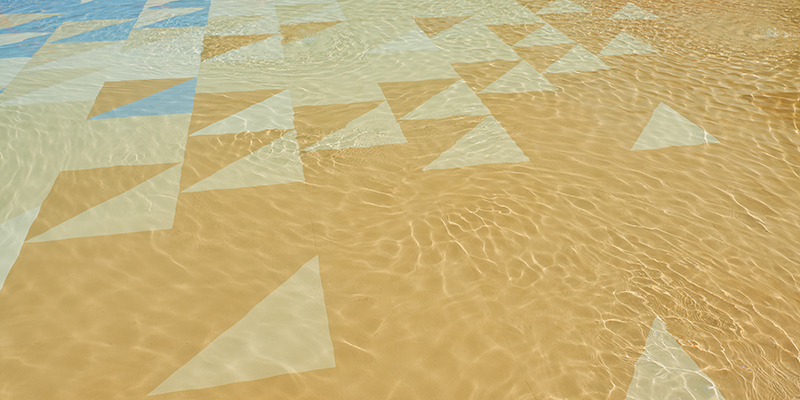Sizzle. The sound you’d like to avoid when wet feet touch hot concrete. If you’ve ever been to an outdoor aquatic facility in the summer, this problem is likely a sore subject. One of the most common complaints brought to us by operators is the issue of hot surfaces throughout outdoor facilities, specifically on pool decks, stair towers, and walkways. It comes as little surprise then to learn that concrete can reach temperatures hovering around 120°F, while rubberized surfaces can easily reach temperatures above 140°F. In one recent study, a rubberized surface was reported to be 170°F (X).
So how big of a safety concern is this?
For reference, the American Burn Association states that human skin begins to feel pain at 111°F and can sustain first degree burns at 118°F and second degree burns at 131°F (dependent on the duration of skin contact and skin age with younger children being more susceptible to burns). On average, third-degree burns can appear in as little as five seconds at these higher temperatures. Permanent damage and scarring appear after one minute of contact with surfaces over 140°F. We’ve included the table below from the American Burn Association to show the relationship between time, temperature and third degree burns.
We’ll spare you the photos, but the issue of burns is sadly common among young children throughout the hottest seasons, and waterpark operators are searching for a better answer.
You Can Drop Eggs on Life Floor, But You Can’t Fry ‘Em
Imagine stepping into a pair of hot flip flops left in the sun - while hot initially, they cool down nearly immediately after stepping into them. That’s very similarly the phenomenon with Life Floor tiles. While our tiles will be warm to the touch in direct sun exposure without water, tiles will also cool quickly when standing in the same place for a few seconds due to our material’s unique ability to dissipate heat. In fact, our tiles do not retain heat, which is the main contributing factor to hot surfaces like concrete. The reason for this is because of the tile’s low thermal conductivity, which in other words means our foam material is very temperature stable.
Even better, in areas that are consistently wet (spray grounds, zero-depth entries, multi-level play structures), Life Floor tiles stay cool.
Adding Color & Style to the Solution
We recommend our lighter color tiles for surfaces with direct sun exposure (think Sandbar, Sandstone, Ivory, Foghorn, iceberg ) to keep the surface as cool as possible. Additionally, Life Floor can be installed over metal floor drains and similar metal features to eliminate metal burns.
So there you have it. You can drop eggs on Life Floor, but you can’t fry ‘em.
Contact solutions@lifefloor.com to learn more about Life Floor solutions for your facility.



